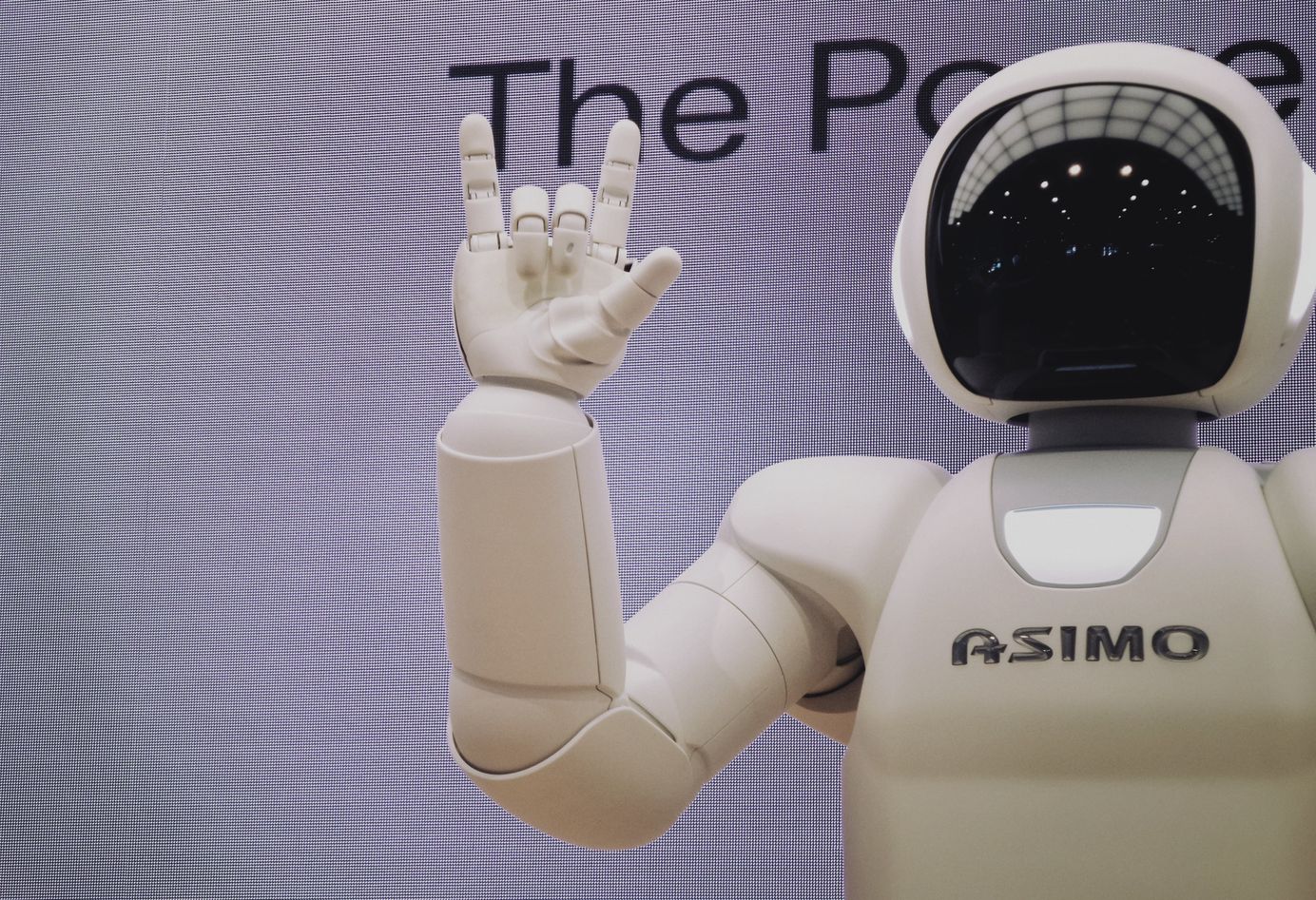
A Robot for Friend: An Indispensable Ally
“My story is a lot like yours, only more interesting’ cause it involves robots.”
“My story is a lot like yours, only more interesting’ 'cause it involves robots.”
Another funny quote from the cartoon Futurama. Bender, the unapologetic robot, was not so wrong in saying so; in the end, in any movie, novel or comic in which a robot is involved increases much more entertainment and that sci-fi taste that we, ExO community, like so much.
Leaving fun and enjoyment apart, the entrance of smart robots in industry and in our daily life did definitely boost our standard of working and living, bringing it to a new level. The impact that robots brought into our workspace and home is just disruptive, democratizing access to a broad variety of services and automated processes. Few advantages were indeed discussed. Firstly, freeing workers from performing low-level tasks while letting them focus on high-performing activities; those that matter for a company/organization development. Hence, this would be possible only when robots are implemented to perform repetitive jobs that humans do not want to do. Secondly, another great advantage is the decrease of manufacturing costs due to automated processes that would inevitably lead to increased production and access to goods or services at a high rate. Thirdly, the consequence of these automatized procedures would allow workers to have a way better work-life balance, freeing themselves from performing secondary tasks.
Guided by artificial intelligence (AI), human-like robots or flying systems became affordable technologies as buying a new computer; nothing at all if considering those life-changing benefits they can bring while enhancing human performances and time management. Besides the well-known voice assistant Amazon Alexa and AI vacuum-cleaner Roomba by IRobot, new technologies were developed to assist human life at home.
Family-friendly robots designed for your comfort and wellness
Ubtech Lynx is the humanoid version of Alexa, although characterized by facial recognition and personalized greetings, it is an incredible assistant able to play music, remind you of your to-do list tasks, support your online shopping, and even forecast the weather (surely now you don’t have any excuses to forget the umbrella!). Although lockdowns are already past memories, it may sometimes happen to feel bored at home, right? No problem! Asus Zenbo is here to provide assistance, entertainment, and fun while being empathic with you. Do you think that’s not enough? Asus Zenbo can also control several home devices, check the security system, and also babysit kids. Who needs a real friend anymore when this robot is around?
If you are one of those clean freaks supposing that with Roomba your flat would have been always clean, maybe you did not try Alfawise Magnetic yet. This robot is way more than a vacuum cleaner, indeed with its microfiber pads and special featured technologies can clean even glasses. Finally, someone is taking care of the windows! And wait. Did I hear “yard”? Worx Landroid is the guy made for you, then. It is a robotic lawn mower specifically created with high-tech solutions to do your yard.
Dolphin Nautilus is another robot to vacuum clean and scrub your pool. Characterized by swivel cables and a GPS, you have the guarantee your pool will shine even more than the sea in Menorca. What? Did you just say “I have not either a yard nor a pool”? Hold on. Budgee by 5 Elements Robotics is the solution for your craft and hand working. This robot can follow you around your house, at the supermarket, at the shopping centers, anywhere you go just to help you carry things. An extra pair of hands is always needed, isn’t it? This sounds like having Aido by Ingen Dynamic. This robot was designed to perform household chores or any tasks you need to do at home; in short, a family-friendly robot designed for your comfort and wellness.
Creative and design thinking cannot be replaced but human limits can be overcome
Nevertheless, these intelligent systems were not just created for easing your daily routine, but their implementation in the medical industry raised incredible opportunities for the entire healthcare system. Indeed, the global implementation of robots in medicine is predicted to increase by about 20% in 2025 reaching almost $24.6 billion; and these estimates are expected to scale even more in the next 10 years.
In this perspective, COVID-19 represented a valuable example and starting point of integrating robots into the medical labor force. “A.I. will not replace physicians. However, physicians who use A.I. will replace those who don’t.” It is indeed true. Robots will not be capable of replacing creative and design thinking or very high human executive functions, but their importance in supporting human capacity would lead to overcoming those limits that humans may encounter every day, limiting actions and possibilities. Robots give support, assistance, and advanced health services. In a recent article of The Medical Futurist, it was described 8 ways that robots in medicine can foster the future healthcare outlook.
Fostering the future of healthcare with robots
During the global pandemic, the need to keep hospitals free of infections was an unreachable mission, and the risk of being infected just for visiting hospitalized relatives was very high. Indeed hospital-acquired infections (HAIs) were an inevitable consequence when visiting medical centers representing 17.6% of COVID-19 type of infection. For this reason, UV disinfection robots were developed to dramatically reduce HAIs while increasing safety.
The entrance of “social robots” became the solution of replacing annoyed and bored receptionists with a welcoming smile and multilingual capabilities. Have you ever met Pepper? It is a social robot recently “employed” as a receptionist in a hospital in Belgium (1) and Czech (2). Pepper can recognize gender and age by their voice. Learning to know each corner of the hospital, this social robot can bring visitors around, and also, it can assist kids with funny games before undergoing “scary” surgeries. Important is that this type of smart robot is not really replacing a human task, but previous receptionists have the chance now to be involved in much more creative and intellectually stimulating activities.
Moreover, drug supply and the transport of other medical goods across countries are already possible with remote-controlled drone deliveries. Zipline, already implemented in Rwanda (3) and Ghana (4) is the latest technology to deliver medical goods by aerial routes reaching very distant countries at high speed, and recently in use also in North Carolina, U.S.
Another innovative technology in telemedicine is InTouch Vici; a robot to facilitate interactions via remote control between patients and doctors. This technology was highly useful during the pandemic to reduce HAIs risk due to social contacts. The possibility to monitor patients remotely (5) represents a valuable solution to assist patients but also among the medical staff.
Deliveries are also possible with the TUG robot by Aethon, a robot designed “with nurses in mind” to deliver in-house clinical supplies and medical materials. Being active 24/7, allows medical staff to dedicate much more time and attention to patient care due to improved logistics and overall hospital management. Few features that make TUG special are automated, effective, and scheduled deliveries, environmentally friendly and automated systems when managing waste, transportation of specific medical products for each nursing unit while increasing safety and time optimization.
Robear, a nice 140kg robot created with a bear shape, was developed to help nurses when lifting and moving patients while lowering the risk of injuries for patients and medical staff; although still in experimentation. Being terrified of needles when drawing blood became a past nightmare now. Veebot is a robot developed to recognize with 83% of accuracy the proper vein based on infrared light, image analysis, and ultrasound system, and at the same time, decreasing pain and fastening procedures.
If you were thinking that robots lack empathy or in human touch, probably you are wrong. Animal-shaped robots were designed to facilitate patient care, hospital experience while alleviating pain, stress, and anxiety due to hospitalization. Huggable is the perfect robot example to socializing with or Sleep Robot by Somnox to improve sleep based on breathing rate sensors and finally, the therapeutic robot PARO developed by AIST responding to several user stimuli (e.g., sounds, light, or touch).
Robots as indispensable friends and trustworthy teammates
The time in which robots were seen only in sci-fi movies or books is already over and their appearance in our daily life became even more than a reality. Supporting humans while performing a variety of tasks, their contribution has dramatically evolved our standard of living and working, bringing it to the next level. Being able to even socialize and empathize with humans, we can consider robots as indispensable friends and trustworthy teammates.
“There are an endless number of things to discover about robotics. A lot of it is just too fantastic for people to believe.” – Daniel H. Wilson

References:
(1) Chini, M. (2020). Robot fights coronavirus spread in Brussels hospital. The Brussels Times. Available at: https://www.brusselstimes.com/brussels/113643/robot-enforces-social-distancing-in-brussels-hospital/ [Accessed on July 27, 2021]
(2) Šulejová,M, & Lazarová, D. (2020). Humanoid robot helping out at Czech hospital. Czech Radio. Available at: https://english.radio.cz/humanoid-robot-helping-out-czech-hospital-8700306 [Accessed on July 27, 2021]
(3) The medical Futurist. (2018). Rwanda and the Dreamers of Digital Health in Africa: Wakanda Is Real. The Medical Futurist. Available at: The Medical Futurist. https://medicalfuturist.com/digital-health-in-rwanda/ [Accessed on July 27, 2021]
(4) Meisenzahl, M. (2020). These drones drop PPE and COVID-19 test samples to medical facilities using tiny parachutes – here’s how it works. Business Insider Africa. Available at: https://africa.businessinsider.com/tech/these-drones-drop-ppe-and-covid-19-test-samples-to-medical-facilities-using-tiny/7bppe55 [Accessed on July 27, 2021]
(5) Nierman, E. (2020). Sheba Medical Center Implements Telemedicine to Prevent Spread of Coronavirus. The Times of Israel. Available at: https://blogs.timesofisrael.com/sheba-medical-center-implements-telemedicine-to-prevent-spread-of-coronavirus/[Accessed on July 27, 2021]
One of the kindest things you can do is to share this information if you found it informative or it increased your understanding in some way. Please use the social sharing buttons or whatever method you like and share on your favorite social channel! Karma is cool and you'll look cool for sharing.
ExO Insight Newsletter
Join the newsletter to receive the latest updates in your inbox.









